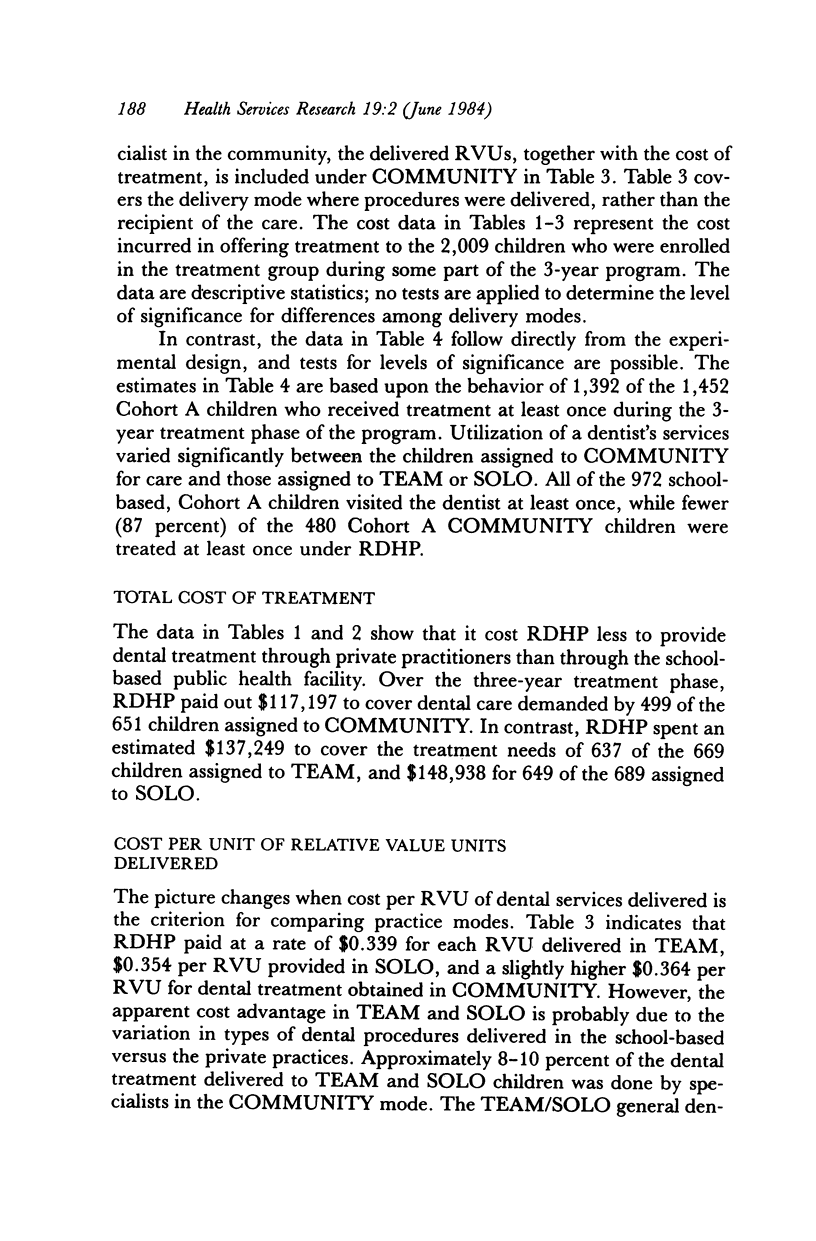Abstract
The search for effective strategies to deal with prevention and treatment of oral disease focuses on children as a natural target population. This article reports data on the comparative costs of delivering dental care to children via (1) a school-based practice using Expanded Function Dental Auxiliaries, (2) a school-based practice without EFDAs, and (3) a group of unrelated private dental practices operating independent of the school system. Utilization of a dentist's services varied significantly between the children assigned to private care and those assigned to the school-based programs, but it cost less per patient to provide dental treatment through the private practitioners. If school-based practices are clearly more effective in reducing dental disease, in the long run the need for manpower and resources in these programs might be lowered to a point where they will become more cost-effective than private practices. If the two delivery modes are equally effective in reducing dental disease, however, results from the study indicate that private practices are more cost-effective and will probably maintain their cost-effective advantage over school-based programs.
Full text
PDF















Selected References
These references are in PubMed. This may not be the complete list of references from this article.
- Bagramian R. A., Graves R. C., Bhat M. A combined approach to preventing dental caries in schoolchildren: caries reductions after one year. J Am Dent Assoc. 1976 Nov;93(5):1014–1019. doi: 10.14219/jada.archive.1976.0032. [DOI] [PubMed] [Google Scholar]
- Doherty N., Paturzo D. Costs and dental care in mobile clinics. J Public Health Dent. 1977 Fall;37(4):266–274. doi: 10.1111/j.1752-7325.1977.tb02915.x. [DOI] [PubMed] [Google Scholar]
- Lewis G. P., Monroe G. F. Children's incremental dental care program: an overview of the southeast Tennessee-northwest Georgia project. J Am Dent Assoc. 1974 Apr;88(4):789–794. doi: 10.14219/jada.archive.1974.0194. [DOI] [PubMed] [Google Scholar]


